The Trip
by Michael Winterbottom
[DVD]
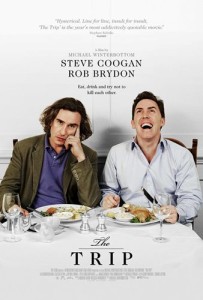
view/request
This feature mockumentary, edited down from a BBC television series, stars Steve Coogan and Rob Brydon as exaggerations of themselves in the entertaining fictional road movie, The Trip. The two colleagues continue their antagonistic relationship that began on the screen with Winterbottom’s A Cock and Bull Story. Coogan initially asks Mischa, his American girlfriend, to accompany him on an assignment where he’ll be writing a magazine piece covering restaurants and quaint inns in the northern English countryside. We soon learn the actor’s relationship is in trouble and he reluctantly calls on comedian Rob Brydon to join him.
What follows is a one upmanship contest of mythic proportions. The two bicker over their careers, public perception, height and general approach toward life. In the car and at various breakfast, brunch, lunch and dinner tables they battle it out with celebrity impersonations, vocal range and improvisational wars. The comedic competition is never ending, but never ceases to be funny. Contrasting the humor is Coogan’s desperation in private moments. Cell phone conversations (with a weak signal) to Mischa, his ex-wife, son and agent reveal the actor’s lonelier side and his frustration dealing with aging.
The uncredited supporting role of this film are the beautiful hills and mountains and the elaborate dishes Rob and Steve are served. Most importantly however, the friendship seen on screen, though obscured by Coogan’s condescension and bitterness, is rather touching at times. Despite his best efforts to isolate himself, this is possibly a story about meaningful human relationships.
Reviewed by Jason
Tagged: Comedy, Feature film, Food
The Pickwick Papers
by Charles Dickens
[Book]
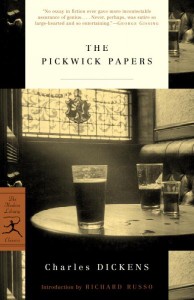
view/request
This was the first novel by Charles Dickens and really a pleasure to read. It tells the story of Mr. Pickwick and his fellow Pickwick Club members as they travel the English countryside and describes their adventures in a very humorous manner but also with a keen eye into the social and political landscape of the time. It was a great re-introduction to Dickens for me and I am looking forward to reading many of his other works.
Reviewed by Susana
Tagged: England, Fiction, Literary fiction
Small Gods : a novel of Discworld
by Terry Pratchett
[Book]

view/request
I’ve read many of Terry Pratchett’s Discworld novels. They are great fun. The Discworld is an imaginary planet in an imaginary universe and everything, even the Discworld’s fundamental physical laws, is written so as to parody or satire our own world. Pratchett isn’t content to leave it at that however, he also parodies literature of all sorts, but especially fantasy novels; he affectionately sabotages these by taking their best known cliches and stereotypes and acting as if they made sense. The results are hilarious.
Small Gods is probably my favorite of the Discworld novels. I have returned to it again and again, and I enjoy it every time. Perhaps it is because libraries and books play such an important part in the book, but I think it is mostly because of the book’s two unlikely heros: the great god Om, stuck in the form of a tortoise and incapable of performing even the smallest miracles, and a lowly novice monk, Brutha, the only living creature who still believes in the great god Om. Om is arrogant and ill-tempered, but endearing in his impotence and confusion as he struggles with his new fondness for lettuce and fear of eagles. Brutha is slow, illiterate, and quite accustomed to be looked down upon, but he has an amazing memory, faith in his god, and an absolute determination to do the right thing.
Things, of course, get complicated. They always do in the Discworld. There is a war and an inquisition, gods and philosophers, a labyrinth and a steam engine. Brutha plods through it all. Om, on the other hand, is carried most of the way. And they are both changed by their experiences. They have to be, because that’s how these kind of stories work, but that doesn’t stop the transformation from being satisfying, and even a little surprising.
Small Gods stands well on its own. You don’t need to read any other Discworld books to appreciate it, and, indeed, it would be a good choice for your first Discworld book.
Reviewed by Ben
Nilsson Sings Newman
by Harry Nilsson
[Music CD]
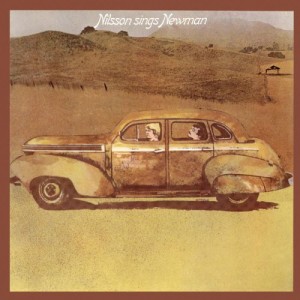
view/request
1970’s Nilsson Sings Newman is an example of the potential for beauty in popular music. Randy Newman, not then a household name, was approached by tenor extraordinaire Harry Nilsson about making an album. Nilsson was a fan of Newman’s effortless melodies, thoughtful chord structures and clever lyrical ability.
Nilsson Sings Newman features only the two artists in question. Newman composes the songs and handles the piano playing duties; Nilsson sings. The simplicity of this set up lends itself to display dynamics and emotive arrangements which do not seem to exist in most contemporary recordings.
Nilsson took great care in recording his vocals on the album. It is rumored that on some songs, pieces of 100 or so takes were spliced together (and remember this was using multitrack tape). He also layered his voice to produce heavenly, Beach Boys-esque harmonies in appropriate places. The refrain of the opener “Vine St.” or the sublime “Caroline” perfectly exemplify the richness of his harmony singing.
The album is full of story songs that in some places are nostalgic for the past. Lyrically, Nilsson Sings Newman feels like a truly American experience. Songs about cowboys, the Midwest and leaving home fill the record. As expected from Randy Newman, humor plays a large part as well. Nilsson, always a fan of silliness and inside jokes, contributes to the humor by insisting that certain off mic instructions by Newman be left on the final version.
Nilsson Sings Newman is an album that is graceful, funny and technologically impressive. It’s great on headphones and it’s one of those albums that I’ll never tire of listening.
Reviewed by Jason
Tagged: Pop music, Vocals
Where We Live: Steve Alves’ Western Massachusetts Film Collection
[DVD]
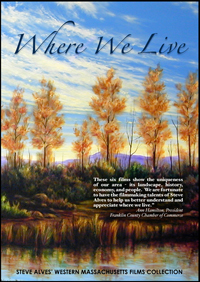
view/request
Filmmaker Steve Alves has been making movies about Franklin County since 1997. These six short documentaries were produced over a period of several years and explore the cultural, economic and natural world from the hyper-local point of view.
Titles: Beneath the River (about the Connecticut) — A Sweet Tradition (maple syrup production), Together in Time (contra dancing) — Everyone’s Business (local entrepreneurs and economic history) — Life After High School (jobs and education) — Talking To The Wall (Big Box sprawl vs. small town Main Street).
If you live here it’s hard not to be fascinated by the lives going on around us, both human and environmental. Steve really gets it, and he’s a fine director too. He is currently working on a new film called Food For Change. Watch for it!
Reviewed by Faith
Tagged: Documentary, Local history
The Rolling Stones: All 6 Ed Sullivan Shows
[DVD]
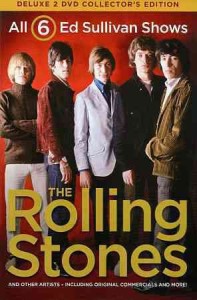
view/request
Recently added to the steadily-growing Forbes DVD collection is this wonderful 2 disc set I recently checked out. It has all of the Rolling Stones appearances on the Ed Sullivan show. From black and white to color television shows, the quality is the best I’ve seen so far and to watch the musical performances was a treat. An added feature is being able to select single acts or watch the complete show (vintage commercials included). Seeing early Rolling Stones, Dusty Springfield AND Tom Jones all on one evening’s show was a fun experience for me.
Reviewed by Susana
Tagged: 1960s, Rock music, TV shows
Julie and Romeo
by Jeanne Ray
[Book]
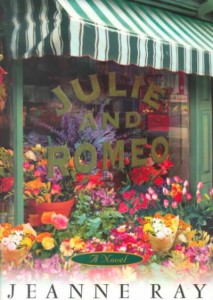
view/request
This light romance turns Romeo and Juliet on its head. Julie is struggling to keep her family’s flower business in Somerville, MA afloat after her husband of 35 years left her (for a younger woman) and moved to Seattle. She runs into her rival, Romeo Cacciamani, at a small business conference. Although he is the other florist in Somerville, and their families have been feuding for years, she finds that not only does she no longer hate him, but they quickly fall in love. In a reversal, it is their children who are against the relationship, and insist on continuing the grudge, even though no one knows why or how it began. Will Julie and Romeo find true love the second time around, or will their children prevail in keeping them apart?
Reviewed by Molly
Tagged: Fiction, Romance

view/request
Film recommendations certainly play a role in a day’s work at the Arts & Music department. It’s often my favorite task to help someone find a film that fits their taste and am always flattered when a patron asks for me to select something that I enjoyed. Recently, the favor was reciprocated. A regular patron suggested, based on our many movie conversations, that I might enjoy the film Kes. He was correct and to continue the dialog, here’s my take:
Kes is a story that I consider the Northern England equivalent of Truffaut’s 400 Blows. Made a decade later, director Ken Loach, who certainly chooses not to glamorize youth or pander to children, creates a nearly bleak portrait of childhood. His central character, Billy Casper, lives in a poor, working class mining community and seems to have his future decided for him at 15 years of age. While not absolutely going for the heavy handed approach, Loach is suggesting flaws in, what he considers, the still existing English class system.
Billy eventually finds an escape from the constant bullying from adult figures (his headmaster, classmates, older brother, gym teacher, etc.) when he notices a nest on a neighbor’s property. He studies the science of training birds and eventually develops trust with a kestrel he appropriately christens “Kes”. His dedication and care earns him the respect from a group of classmates and a caring English teacher (who is possibly the only kind adult in the film).
Kes, which is heartbreaking and desolate feeling at times, is a remarkable work. Loach’s nonjudgmental camera style, the simple and lyrical imagery, the falconry scenes with young Billy’s textbook narration and soft English landscape gives the film a quality not unlike a documentary.
Reviewed by Jason
Tagged: British film, Drama, Falconry, Feature film
The Penny Whistle Book
by Robin Williamson
[Book]
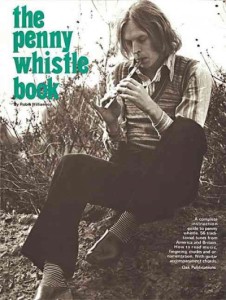
view/request
A couple months ago, I saw The Penny Whistle Book come up to the Arts & Music library and happened to notice that it was penned by the Incredible String Band’s Robin Williamson. He was essentially one half of the group, sharing vocal and songwriting duties with Mike Heron. At this time I also was thinking about the arrangement for a song of my own and was in need to have a flute or whistle type sound for a two note hook in the final chorus (a la “Penny Lane”).
The sensible thing to do I thought was to go to check out the book and head to
Downtown Sounds in Northampton and see how much one of these whistles costs… Turns out they’re very cheap (something like $10). I cracked the book open, read the introduction and was making sounds and playing scales right away.
The slim Penny Whistle Book is filled with traditional American and British tunes with accompanying illustrations that reference the era in which the pieces were most likely composed. The sheet music is also perfect for playing instrumental accompaniment like guitar or banjo because chords are placed at the top of the staffs.
The penny whistle is a fun and simple instrument to play. You really don’t need to be able to read musical notation or have special technique in operating a mouthpiece. You just place your fingers on the holes and blow!
Reviewed by Jason
Tagged: Folk music, How to, Music instruction
Old Jews Telling Jokes
by Sam Hoffman ; with Eric Spiegelman
[Audiobook]
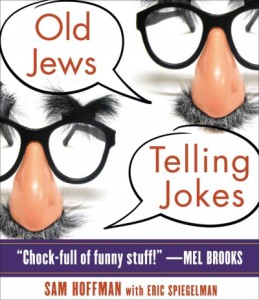
view/request
This project started as a website, still going strong at www.oldjewstellingjokes.com. A couple of guys and their dads started rounding up all their “aunts and uncles, wise-cracking attorneys and periodontists,” as the web site says. Each clip is a couple of minutes of one person telling a joke. These are not professional comedians, they are ordinary people from the culture that created the Marx Brothers, the Catskill circuit, and Mel Brooks. Some of the stories have been around a long time, but nearly all of them land between amusing and hilarious on the laugh-o-meter. You’ll find ironic, raunchy, and self-deprecating bits as well as some marvelous timing and delivery. The narrator I could do without. Still, it beats therapy.
Reviewed by Faith
Tagged: Comedy, Jewish humor
Blood, Bones, & Butter: The Inadvertent Education of a Reluctant Chef
by Gabrielle Hamilton
[Book]
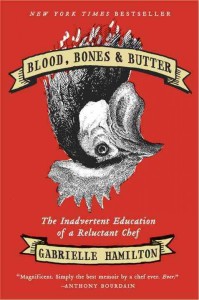
view/request
Hailed as “the best memoir by a chef ever” by Anthony Bourdain, and a NY Times Notable Book in 2010, this unusual memoir follows the life of Gabrielle Hamilton, now chef/owner of Prune in NYC. It is unusual in that Hamilton is such a good writer, and seemingly holds nothing back, allowing us to see the bad and ugly along with the good.
The quality of her writing is partially explained with her MFA from the University of Michigan, an experience she relates in ambivalent terms, “It’s a tired reading style…it attaches more importance to the words than the words themselves — as they’ve been arranged, could possibly sustain, and it gives poets and poetry a bad name. Which is not what I came to graduate school for; I want to forever admire poets.”
The bad and the ugly includes her wayward youth and relationship with her family after her parent’s divorce. How she develops from a lost girl to opening an award-winning restaurant in New York and a marriage with an Italian doctor (and his family), is a compelling story, with lots of detail of the food along the way, that never feels like it bogs down the story.
And here, as a treat to celebrate my last day before continuing on my journey, when we drove to the coast, past fields of shooting asparagus and trees about to burst forth, and we stopped finally at the water’s edge in St. Malo- here are platters of shellfish pulled that very morning from the sea-langouste, langoustines, moules, crevetted, huitres, bigorneaux, coques. These are the pearl-tipped hat pins stuck into a wine bottle cork for pulling to the meats of the sea snails. The tide ran out, and the fishing boats slumped in the mud attached to their slack anchors like leashed dogs sleeping in the yard. The particular smell of sea mud went up our nostrils as we slurped the brine from the shells in front of us, so expertly and neatly arranged on the tiers.
Reviewed by Molly
Tagged: Food, Memoir, Non-fiction
Hindugrass
by John Heitzenrater, Carolyn Balfe, Yunior Terr, Evan Fraser, and Austin Wrinkle
[Music CD]
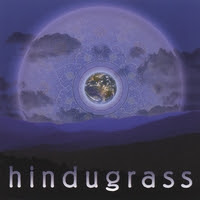
view/request
What could you find in common between the classical and folk music of Northern India, and old time and bluegrass music of the Southeastern United States? Quite a lot actually, and Hindugrass does an excellent job exploring and exploiting those similarities. Headed by John Heitzenrater on sarod, Hindugrass is alternatively haunting and driving, lyrical and percussive, familiar and strange. In addition to sarod we hear, fiddle (played in American style), bass, tabla, kanjira, bones, and other percussive instruments. The melodies comfortably shifts back and forth between a more eastern and a more western sound, but the rhythms show a primarily Indian influence, with the melodic and percussive instruments alike taking part in the polyrhythm, tihai, and other rhythmic devices that are responsible for much of the excitement of Indian music. This is an exciting recording for lovers of Appalachian and Indian music alike. You can get a preview of their music at http://www.hindugrass.net/, or borrow the CD from the library to hear the whole thing!
Reviewed by Ben
Tagged: Folk music, Indian music, World music












